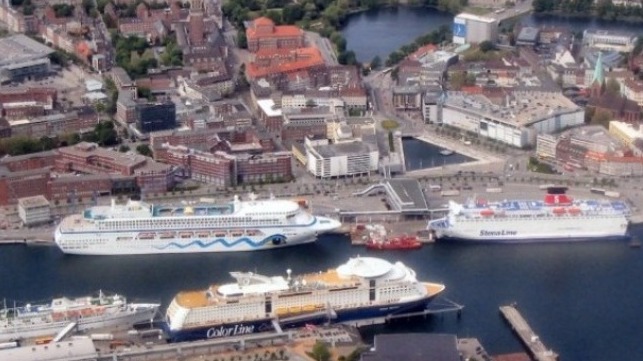Rolls-Royce’s new mtu engines, new mtu ship automation system, and new mtu Go! tool for remote service have future-proofed the high-speed catamaran Avemar Dos run by Spanish operator Balearia. Four new generation mtu 20V1163 M84 units replaced the previous 1163 units, taking the vessel to a new level of ecological soundness. Fuel consumption – and CO2 emissions – are 8% lower than with the previous propulsion system. Furthermore, the new Series 1163 units deliver the same power output, but with a 33% reduction in NOx emissions, thereby meeting the requirements of the IMO Tier II emissions standard.
The ferry’s automation system has also been renewed: the mtu ship automation not only controls and monitors engines and gearboxes, but numerous other crucial ship systems such as fuel tanks and on-board generator sets. That means that the crew can benefit from an all-round view of the ferry. The new ship automation system brings not only new software, but new screens and computers with interfaces to other systems on board. The digital platform mtu Go! puts the finishing touch to the ferry’s all-round update, allowing the customer to remotely access the vessel’s operating data at any time, monitor its condition and predictively plan maintenance.
Pablo Vivancos, Sales General Manager at Rolls-Royce Solutions Iberica, said, “The Avemar Dos is now the fourth Balearia ferry to be powered by mtu. Several these ferries are supported by mtu Value Care maintenance agreements, individually tailored to suit each vessel. We’re very proud to be Balearia’s trusted partner.”
The Avemar Dos catamaran was built in 1996 by the Austal shipyard in Australia. It went into service in 1997 and following several changes of owner was taken over by ferry operator Balearia in 2008. It originally served the Strait of Gibraltar route between Algeciras and Ceuta. Now the new repowered ferry plies beween the mainland port of Denia and the Balearic Islands of Ibiza and Majorca. The 82m ferry can accommodate 855 passengers and 174 vehicles.
Besides the Avemar Dos, the Ramon Lull high-speed ferry was recently re-powered using mtu engines – in this case Series 4000 units. Other high-speed ferries, like Nixe and HSC Formentera Direct, have used mtu propulsion ever since going into service.












